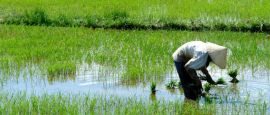Vietnam Food and Drink
Vietnamese cuisine is a feast for the senses, known for its fresh ingredients, bold flavours, and balance of textures. Each region has its own culinary identity—light and fragrant in the north, spicy and complex in the centre, and sweeter and more vibrant in the south. Street food is an essential part of daily life, and some of the best meals can be enjoyed on a small plastic stool at a bustling roadside stall.
Rice and noodles form the base of many dishes, accompanied by a variety of herbs, vegetables, and proteins like pork, chicken, beef, and seafood. Dipping sauces, especially fish sauce (nước mắm), play a key role in adding depth to meals. Eating in Vietnam is often a communal affair, with dishes shared and enjoyed together.
Tourists should note that food is generally safe to eat, particularly when freshly cooked. It's wise to drink bottled or filtered water, though ice served in reputable establishments is usually safe. Food allergies should be communicated clearly, as ingredients like peanuts and shellfish are common. Vegetarian options are available but may require some explanation, as fish sauce and meat broth are widely used.
Phở: Vietnam's iconic noodle soup, typically made with beef or chicken, flavoured with star anise, cinnamon, and fresh herbs.
Bánh mì: A crispy baguette sandwich filled with meats, pickled vegetables, herbs, and chilli sauce—a legacy of French colonial influence.
Bún chả: Grilled pork served with rice noodles, herbs, and a tangy dipping sauce, famously enjoyed by Barack Obama in Hanoi.
Cao lầu: A Hoi An speciality featuring thick noodles, sliced pork, fresh greens, and crunchy croutons in a light broth.
Gỏi cuốn: Fresh spring rolls filled with shrimp, pork, vermicelli noodles, and herbs, served with a hoisin-peanut dipping sauce.
Cơm tấm: "Broken rice" served with grilled pork, egg, pickles, and fish sauce, popular in southern Vietnam.
Cà phê sữa đá: Strong Vietnamese coffee brewed with a drip filter, mixed with sweetened condensed milk, and served over ice.
Rượu gạo: Traditional rice wine, often homemade and enjoyed during festivals or family gatherings.
Bia Hơi: Freshly brewed draught beer, light and cheap, commonly served at local beer corners.
Tra đá: Iced green tea, served for free in many restaurants and cafés, perfect for cooling off.
110: A potent local spirit distilled from rice, popular in the north and known for its fiery kick.
Tipping is not a traditional practice in Vietnam, but it is becoming more common in tourist areas and is always appreciated. In restaurants, rounding up the bill is polite. In more upscale venues, a tip of 10% is a good guideline.
Do you have any Feedback about this page?
© 2025 Columbus Travel Media Ltd. All rights reserved. No part of this site may be reproduced without our written permission, click here for information on Columbus Content Solutions.




 You know where
You know where